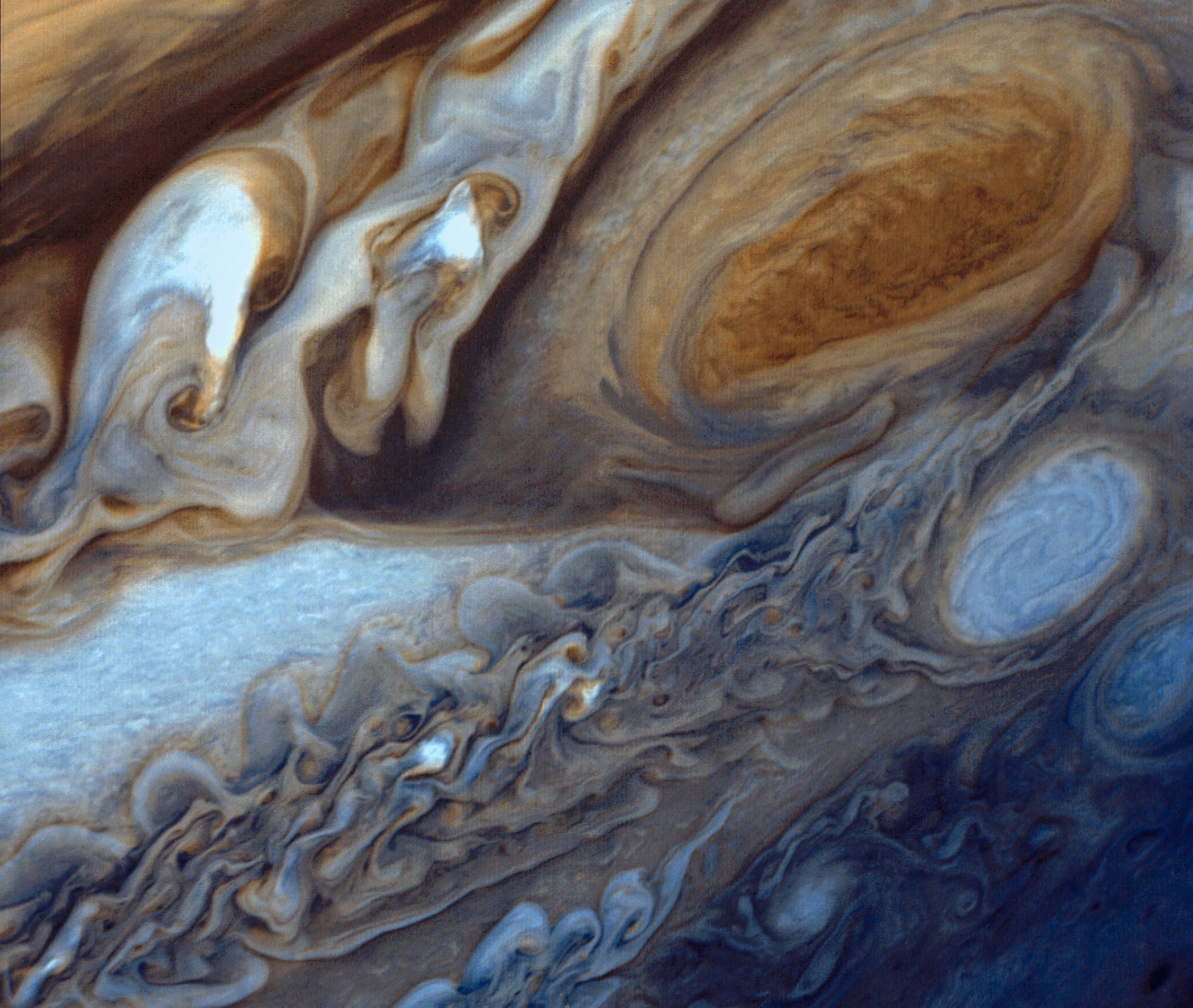How to See Jupiter in All Its Glory
Throughout May, the gas giant will be close to Earth and visible all night long.

Jupiter is always in the sky, of course, but sometimes it’s especially dazzling.
It takes the gas giant 12 years to wend its way around the sun. At this point in its orbit, it is at opposition—the position where it is closest to Earth, on the side farthest from the sun. (“Close” is relative, though: Even when Jupiter appears to be in our celestial neighborhood, it’s still 410 million miles from us.) Jupiter is among the brightest objects in the sky, and if you plan to attempt a close-up look at the planet this year, this week will yield particularly stunning views.
When to look
Your ideal viewing window depends on where you are, and what may be blocking your view of the horizon. Bright lights won’t dampen it much. “Even in the worst light-polluted city in the United States, you will see Jupiter,” says Michelle Nichols, director of public observing at Chicago’s Adler Planetarium.
The bigger concern is a horizon line chewed up by buildings or trees. The fewer structures blocking your sightline, the earlier you’ll see Jupiter. In a city, skyscrapers may limit your view until after midnight, when the planet rises above them. At its highest, Jupiter will be about 33° in altitude when it is due south, says Peter Tagatac, president of the Amateur Astronomers Association of New York. Using a body as a calculation device, 33° is roughly “three fists with capped thumb at arm distance above the horizon.” Jupiter will be most visible when it climbs 20° or greater above the horizon, says Tagatac. Today, that’s about 10 p.m. EST; as the month progresses, it will be a little earlier each day.
What you’ll need
The planet will be visible all night, and when you do scan the sky, you’ll be able to glimpse it with the naked eye. “There’s no mistaking it,” says Nichols. Look southeast: Jupiter will be the bright dot. One way to differentiate Jupiter from stars is by the extent to which they appear to flicker. Jupiter is closer to us than many stars are, and even though it also reflects light from the sun, it’s brighter, steadier, and less affected by gusts or other fluctuations in the atmosphere. “If it’s really windy and the air is turbulent, you might see some twinkling, but you’d notice that stars are twinkling a lot more,” Nichols says.

Through binoculars, Jupiter will appear as a slightly larger dot flanked by dimmer ones. These are four of its moons: Io, Europa, Ganymede, and Callisto. (Galileo, the first astronomer to record sightings of those moons, did so in 1610 with magnification 18.) Binoculars are ample enough to glimpse the moons, “but their drawback is that sometimes it’s hard to hold them still enough to enjoy the sight,” says Shana Tribiano, an associate at the Hayden Planetarium at the American Museum of Natural History. If you’re peering through binoculars, it might help to mount them.
Details on the planet’s surface will emerge when you look through a small telescope with a magnification of 75 or 100 power. “The brownish equatorial bands stands out with a ruddy hue,” Tagatac says, and when a Jovian moon slinks between the Earth and Jupiter, a small telescope would suffice “to see its shadow transit like an inky black dot.” Some public libraries have telescopes available to borrow. If yours doesn’t, contact your a local astronomical society or club about public viewing hours.

To peep the Great Red Spot, says Tagatac, you’d need a bit more: a telescope with at least a 150-power magnification. Tagatac suggests the awe-inspiring name is a little bit of a misnomer; he calls it the “Disappointing Pale Spot.” Even so, he adds, it’s exciting to gaze at the dot, a massive storm twice the diameter of Earth that’s been swirling for at least 300 years.
How to make sense of the sky
For a more precise read on what you’re looking at, Nichols suggests sky charts and apps, such as Sky Safari. When you enable your phone’s GPS, point it at the sky, and zoom in, these will label the moons and tell you which is which. (Remember, if you’re looking through a telescope, the image will be backwards.)
Whether you’re spending time with an old friend or meeting the gas giant for the first time, this month is a great chance for any skyward-looking Earthlings to get to know our most massive neighbor a little bit better.










Follow us on Twitter to get the latest on the world's hidden wonders.
Like us on Facebook to get the latest on the world's hidden wonders.
Follow us on Twitter Like us on Facebook